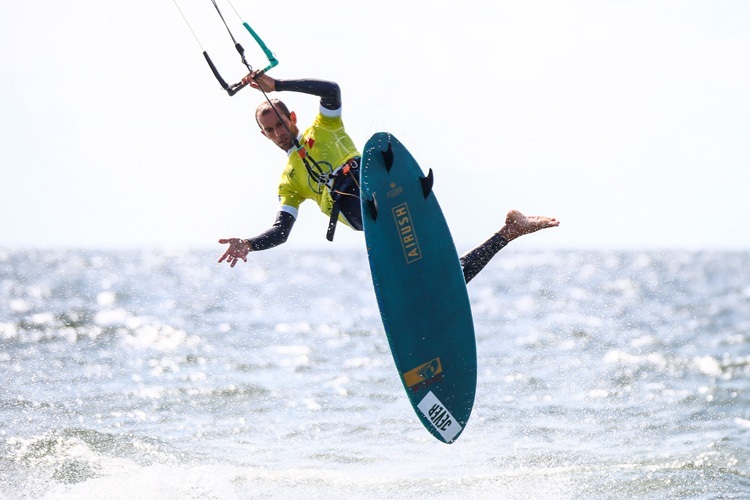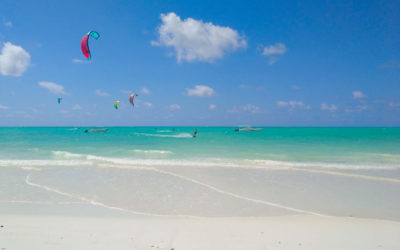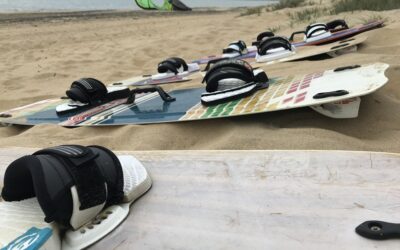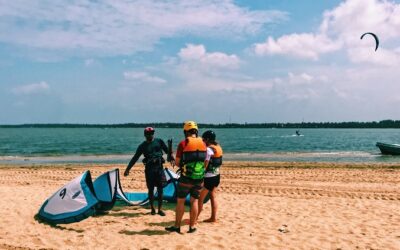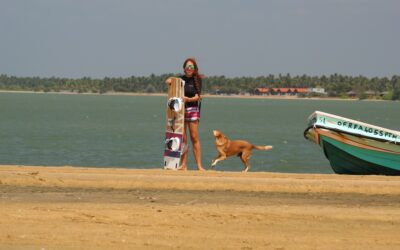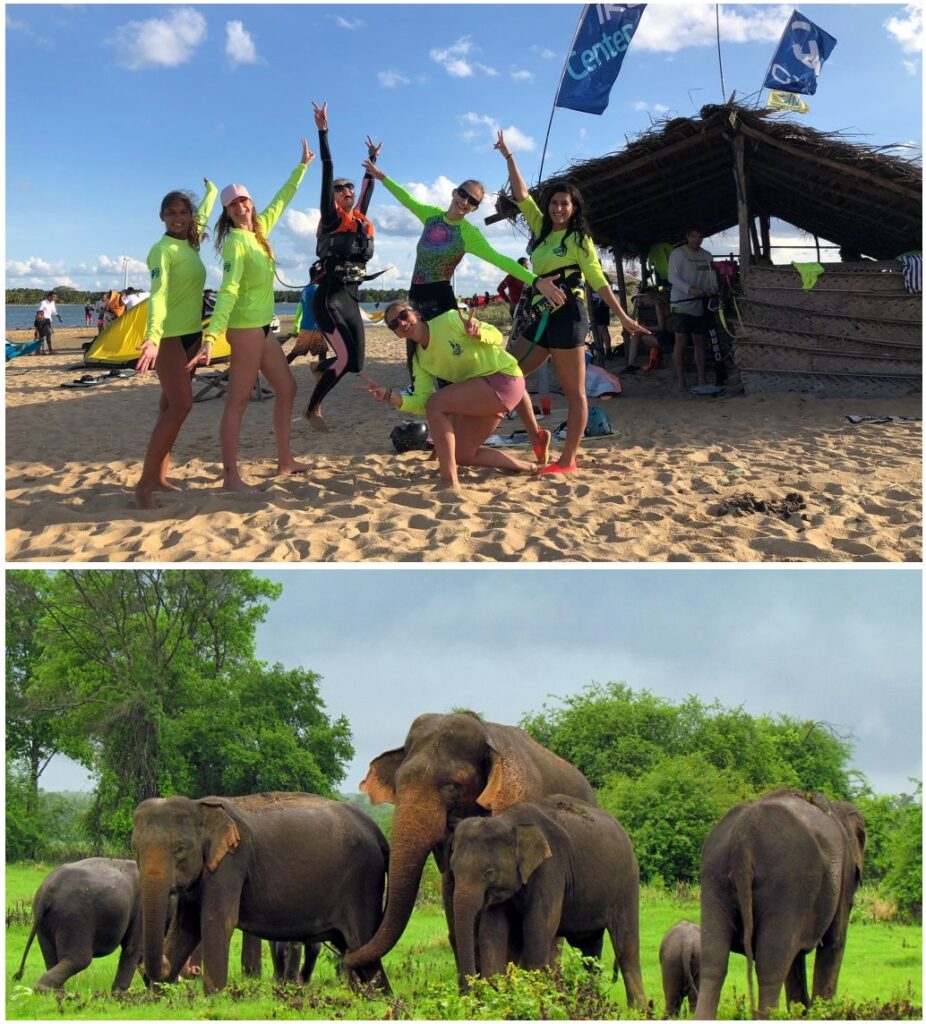As kitesurfing instructors, we have heard on many occasions the most common words when it comes about learning to kite; “I would like to learn, but I’m afraid of flying away”. Sometimes due to ignorance or not having enough information, kitesurfing can seem like a dangerous sport for some people.
We can affirm, without fear of being wrong, that kitesurfing is a safe sport, as much as skiing or roller skating can be. By following some basic safety guidelines and using prudence and common sense, we can minimize the possible risks that may occur.
However, there are certain aspects that you have to take into account to ride safely without putting in danger your life other people life.
For all of that, we have created this guide that will help you to have an idea about the possible dangers of kitesurfing and what are the most common accidents & injuries that can occur.
The best kitesurfing spots in the world
"From Asia to America, from East to West. Explore some of the world's finest kitesurfing spots. And, no sharks!" Maybe you’ve been kitesurfing for a while, and want to try exciting new waters? Holidays to famous kitesurfing destinations around the world is all part of...
The ultimate guide with the top kitesurfing spots in Asia
If there’s one sport that can enthral your senses and make you feel more attached to the beautiful nature, it’s kitesurfing. The kitesurfing community is moving towards a new goldmine for surfing. Asia, though underrated, is home to some of the best kitesurfing spots....
The ultimate guide with the top flatwater kitesurfing destinations
Best places in the world to kite in flat water Be it surfing over the clearest of waters or performing gravity-defying stunts near the dock, kitesurfing, and its adrenaline boost is unrivalled. A passionate alliance of wind and water, kitesurfing provides...
The ultimate guide with the top kitesurfing destinations to learn kitesurf
Best Places to Learn to Kitesurf There are not many things in this world that can give the same adrenaline rush, as the exhilarating experience of kitesurfing. Harnessing the wind’s power to glide across the water surface, and be lifted high into the sky, is...
The most common kitesurfing accidents
Kitesurfing has an added danger compared to other water sports. In all of them, you can fall. Still, in kitesurfing, you will surely end up dragged until your kite wants, sometimes even if you leave it on a single line. And the reality is that in case of losing kite control things can go from wrong to worst if you are not fast enough pulling the chicken release.
We don’t want to be ashy or scare your body, but the freedom and fun that this sport provides us are not free. In addition to the high prices of the equipment, we will have to accept that accidents sometimes happen, although we tend to think that it only happens to others, and it is better to be prepared to know how to react.
Down here you have a list of the most common accidents that can occur while kiting (Accidents usually occur due to the following reasons)
1. Crash with obstacles or other kiters. Be careful, especially with our kite lines and those of others. For us, getting involved with the lines is the most dangerous part of this sport.
2. Simple crashes in the water. Have you ever thrown a flat stone in the water to make it bounce? Well, the same thing can happen with your face.
Ride a kite of wrong measurements for that day.
3. Wrong big jumps landing
If you are a beginner, keep in your memory all the security measures that you have to execute if necessary. We suggest to try them one by one on a day with little wind and a wide beach without obstacles nearby: check the chicken loop, release the leash, relaunch the kite in the air, etc.
If you already control this sport and you think that it is not necessary to review or test all these safety measures, then you are more dangerous than the newbie. It never hurts to unhook the chicken and try to mount it in the water or the sand or try to do a self-rescue in the water by picking up the lines on the bar.
>>> Kitesurfing injuries
In kitesurfing, we are continually making efforts to girdle, jump, dominate a gust of wind, direct our kite and many other movements. All of this can create small injuries that we usually don´t care until one day; our body says enough. The anxiety of being left without being able to kite is generally more significant than simple knee pain.
Let’s make a summary of the injuries that can occur by accident or only when riding, and some alternatives to solve it.
1. Scratches, burns and bruises. If you are a kiteboarding addict, then you will keep kiting without even complaining
2. Continuous pain in the knees. Go preparing for a right knee brace to wear with you in the water. It is probably the time to forget about jumping and start thinking of strapless surf kite as a possible option
knee pain sailing
3. Back, neck, forearm and shoulder pain. You will have to change the way you kite and even test other kites or harnesses. Sometimes it is not about the wrong move you do but the faulty equipment you have. Use the equipment that better suits your body and be very careful of not being overpowered
The most common injuries when practising kitesurfing are abrasions, erosions and bruises. We can get thrown or dragged through the sand, hit other surfers or boats or pleasure boats.
Foot, ankle and knee injuries (sprains or fractures) usually occur when the kiter is thrown from the board or when the board is turned by the force of a wave or a hard landing. They can range from the slightest, which is a simple twisting of the ankle or knee, to the possibility of a major fracture. Everything will depend on the energy of the trauma. The same occurs with direct trauma to the chest or head.
If the latter occurs in shallow water, the impact can multiply and cause a fracture of the spine, so it is always important to navigate away from shore.
On a smaller scale are the discomfort caused by prolonged postures over time, the friction of the material or simple muscle overload. In this group are cervical ailments (a consequence of constantly directing the gaze towards the kite), inguinal or lumbar (where the harness is usually attached) and other typical injuries such as tennis elbow or epicondylitis and shoulder, caused by constant sudden movements that you are subjected to. The fact of having to hold the kite with the bar, always with the same position of the hands and the back and forth movement, conditionate these overloads for the elbows and shoulders.
Possessing good technique and being aware of the mechanisms of injury production is essential to be able to minimize the risk associated with their practice.
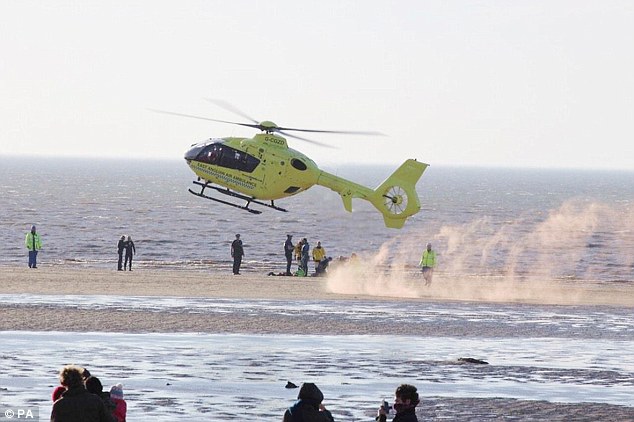
Regarding the rest injuries, like fractures and so on, we don’t see the need to kite with crutches so better you recover and come back more calmly.
The issue of joint injuries is severe, most of the time they occur due to wear and tear, and there are methods to control it, other than an intense and acute pain, it is the trap that will make it worse by not remedying it in time.
Remember to go to the doctor if mild pain recurs for more than a few days. It is a shame to have to abandon the kite for not having stopped a problem soon.
How to minimize kiteboarding accidents and injuries?
1. Choosing a school that guarantees your safety
If you still do not have previous experience, it will be essential to take a course in a school to learn the basic concepts and start to have the reasonable control of the kite both in and out of the water under the supervision of a professional. We strongly discourage learning at the hands of a friend who knows how to kitesurf, for the following reasons that we expose below:
* Liability and accident insurance: Even taking into account all the precautions, the risk of an accident is always there. The school must cover accident and liability insurance.
* Equipment and material: A professional instructor has adapted material for teaching. When you go to a professional school, you make sure you are learning with the most suitable equipment for you

First of all, you have to know if our level is ok for kiting according to the spot conditions. It is a must to check the wind, waves and obstacles, among other aspects.
2. The wind
Which is the appropriate wind to practice kitesurfing safely?
* The most appropriate and safest wind direction is an on-shore wind, that is, from sea to land. In an emergency, it is the wind itself that will take us to shore. If the wind is off-shore, we will have to make sure that we have some means of rescue, for example, a support boat
* It is also necessary to take into account if the wind encounters obstacles (buildings, trees, etc.) These can make the wind very gusty or even create wind shadows where it disappears completely. The best thing will always be, as far as possible, to kite in areas where the wind is steady
* You must always check the wind forecast before entering the water and take into account if it is going to rise, fall or change direction, storms, etc.
3. The kitesurfing spot
It is vital to observe the spot where we want to practice. We instructors, we call it SEA (Spot, Environment, Activity) assessment.
For this, we must look at the following aspects:
* Locate and avoid obstacles, both downwind and upwind, as explained above.
* Respect areas for bathers or where sports are not allowed.
Pay attention to the signs and always respect the other users of the beach.
* The beach should preferably be sandy and not have rocks or obstacles with which we could have an impact in the event of loss of control.
4. The kiteboarding equipment
Kitesurfing equipment evolves every year in performance but also safety. It is essential to renew often the equipment since the safety systems will be more advanced, which is why we always recommend using models of no more than 3-4 years back.
5. Practice kitesurfing in company
With people, it is always more fun and above all, safer. Your friends will be able to help you in case of an accident or vice versa.
6. Kite safely
We insist, do not enter the water if your conditions and your level are not suitable according to the sea/wind conditions.
* Maintain a minimum safe distance with other kiters and extend this distance when you are going to perform a manoeuvre or jump.
* Don’t forget the importance of mastering body drag and self-rescue techniques.
* Don’t drain the batteries. It would be best if you never reached exhaustion, it may be that you have a problem and need extra energy to solve a problem. Take your breaks between sessions, protect yourself from the sun and stay hydrated.
Conclusion
We hope that this post has made you aware of the risks inherent to kitesurfing. As we mentioned at the beginning, kitesurfing is a safe sport as long as you take the appropriate measures. However, without the necessary knowledge, it can carry some danger. So better you take care of yourself and other kiters around when you jump into kitesurfing! Leave us a comment or a private message if you need more information about kite accidents, and we will be happy to help you!!
MARGARITA KITE SCHOOL IS THE NUMBER 1 KITESURFING SCHOOL IN KALPITIYA, SRI LANKA
How much does kitesurfing equipment cost?
For many people who are new to kitesurfing and want to learn, a commonly asked question is how much kitesurfing gear costs. However, the answer to this question is not a straightforward one - The price of kitesurfing equipment varies between items and even between...
Kite gear maintenance: best practices for a long life of your kitesurfing equipment
Have you just started in the sport and still don't know very well how to keep your kitesurfing equipment in the best conditions? Your Kitesurfing equipment is very important, and if you love it and you want it to last for a long time, you must maintain it in the best...
The ultimate guide to beginner kitesurfing boards
Have you finished your kite course and you don't know which initiation board is the most suitable for beginners? In this post, we will help you to choose the best beginners kitesurfing boards and the ones which you can progress faster. There is always a hard time in...

